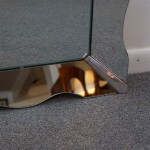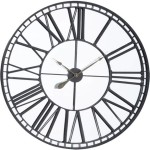Antique Glass Mirror Sheets
Antique mirror sheets offer a unique blend of historical charm and decorative appeal. Their distinct characteristics, stemming from age and manufacturing techniques, distinguish them from modern mirrors. This article explores the characteristics, identification, restoration, and applications of antique glass mirror sheets.
Characteristics of Antique Mirror Sheets
Several key features help identify and appreciate antique mirror sheets:
- Distortions and Imperfections: Early manufacturing processes resulted in imperfections like ripples, bubbles, and slight variations in thickness. These imperfections contribute to the antique aesthetic.
- Silvering Degradation: Over time, the silver backing of antique mirrors can deteriorate, leading to foxing, spotting, or a darkened, mottled appearance. This aging process is considered desirable by many.
- Thickness and Weight: Antique mirror glass tends to be thicker and heavier than modern glass due to historical production methods.
- Beveled Edges: Many antique mirrors feature beveled edges, adding a decorative element and a sense of depth.
Identifying Antique Mirror Sheets
Authenticating antique mirror sheets involves careful examination:
- Back Coating: Examining the back of the mirror can reveal clues about its age and manufacturing technique. Mercury silvering, used before the mid-19th century, has a distinct look compared to later silvering methods.
- Glass Composition: Antique glass often has a slightly different chemical composition than modern glass. This can sometimes be determined through specialized analysis.
- Frame and Mounting: The frame and mounting hardware can provide further evidence of the mirror's age and origin.
Restoration of Antique Mirror Sheets
Restoring antique mirror sheets is a delicate process aimed at preserving their historical integrity:
- Cleaning: Careful cleaning with appropriate solutions is essential to remove dirt and grime without damaging the delicate silvering.
- Resilvering: In cases of severe silvering degradation, resilvering can be undertaken by specialized professionals. This involves carefully removing the old backing and applying a new silver layer.
- Frame Repair: If the mirror is framed, restoring or replacing the frame can enhance its overall appearance and provide structural support.
Applications of Antique Mirror Sheets
Antique mirror sheets have a wide range of applications in interior design and decorative arts:
- Wall Decor: Large antique mirror sheets can create a stunning focal point on a wall, adding character and a sense of history to a room.
- Furniture Inlays: Antique mirror pieces can be incorporated into furniture design, adding a touch of elegance and vintage charm to cabinets, tables, and other pieces.
- Art and Craft Projects: Smaller pieces of antique mirror can be used in various craft projects, such as mosaic art, jewelry making, and mixed media creations.
Sourcing Antique Mirror Sheets
Finding antique mirror sheets requires careful searching and consideration of reputable sources:
- Antique Shops and Dealers: Reputable antique dealers often have a selection of antique mirrors, providing expertise in authentication and condition assessment.
- Auctions: Antique auctions can be a good source for finding rare and valuable mirror sheets, but thorough research and inspection are crucial.
- Salvage Yards and Architectural Reclamation: These sources can offer unique and sometimes large antique mirror sheets salvaged from old buildings.
Caring for Antique Mirror Sheets
Preserving the beauty and integrity of antique mirror sheets requires proper care:
- Avoid Excessive Moisture: High humidity and direct contact with water can damage the silvering and the glass itself.
- Gentle Cleaning: Use soft cloths and appropriate cleaning solutions to avoid scratching the surface or further degrading the silvering.
- Proper Storage: Store antique mirrors in a dry, stable environment away from direct sunlight and extreme temperatures.
Value and Investment
The value of antique mirror sheets can vary considerably based on several factors:
- Age and Rarity: Older and rarer mirrors generally command higher prices.
- Condition: The condition of the silvering, glass, and frame significantly impacts value.
- Size and Shape: Larger and unusually shaped mirrors are often more desirable.
- Provenance: A documented history of ownership can increase a mirror's value.

Antique Mirror Tiles Glass

Antique Mirror Tiles Backsplash Müller Designs

Antique Mirror Tiles Glass

Antique Mirror Sheets

Antique Mirror Tiles Glass Light Elegant Finish Müller Designs

Antique Mirrored Wallpaper Mad About The House

Antiqued Mirror Panels Antique Tiles Tmp 16 Aldgate Home Ltd

Antique Mirror Glossy Glass Tile 12x24x13 64 Flooring Gray

Factory Customized Size Retro Style Subway Tiles Backsplash Antique Mirror Glass Sheet China Decoration Made In Com

Top 10 Antique Mirror Glass Ideas And Inspiration








